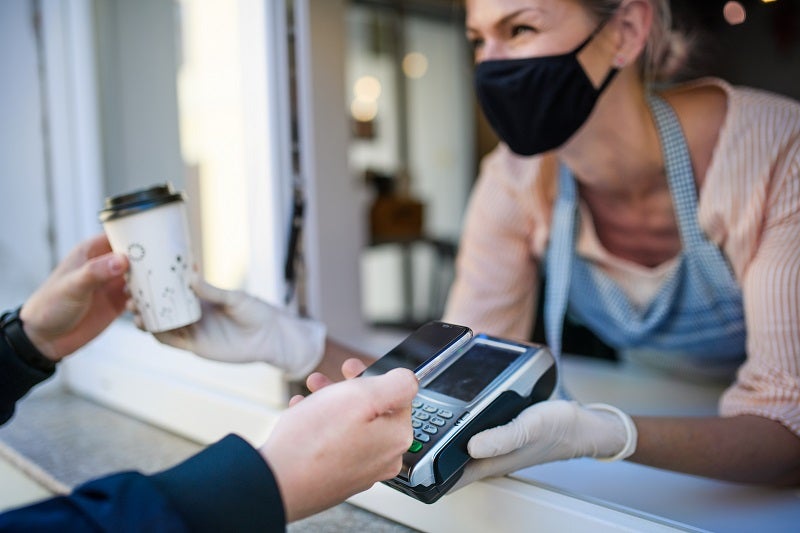
Payments resilience refers to the capability of a payments service to maintain its uptime and provide resistance to attack and downtime. Mohamed Dabo reports on how Covid-19 is redefining resiliency in payments
The ideal systems will provide a 100% payments uptime guarantee 365 days a year. Most financial institutions globally do not offer 100% uptime. Put simply, they cannot afford the financial liabilities that attach themselves to such promised uptime.
That leaves the payments processors. The fact is, while most processors may build for 100% uptime and may be better than the offerings from financial institutions, not many achieve that goal.
The “cloud” for payments processing is not a saviour either. Architecting payments processing for the “cloud” has also had a chequered past. Most processors and institutions have had mixed success, but none have dominated.
Network failures are inevitable, and that for systems to be resilient, offline capabilities must be included in the system design to be utilised when connectivity is unavailable. This is how some processors are capable of providing 100% uptime, all the time.
Access to secure and resilient electronic payments infrastructure is critical during these uncertain times.
How Covid-19 is redefining resiliency in payments
Resiliency has always been a key component of modern global payments ecosystems; however, the Covid-19 pandemic has changed our definition of the concept.
Previously focused on “system backup,” a resilient payments system or function was one that could continue operating with little disruption in the face of a technical issue, natural disaster or even a terrorist act. That’s according to a study by EY Global, which is the source of much of this article.
Operators worked to achieve, and regulators expected systems uptime (99.999%) and the ability of key capabilities “fail over and stay” to avoid any hiccups in payment operations.
The aim was not only to ensure seamless operations and customer experience, but also to instil confidence in the stability, and “safety and soundness” of the payments system.
But Covid-19 has presented a very different type of disruption
Its impact requires us to rethink payments resiliency, expanding the definition beyond system and operational uptime to include the dynamic flexibility of systems, products, processes and the workforce.
Covid-19 did not cause a technical or systems outage, but it did create challenges for workforces and for traditional rules of payments.
The pandemic’s sharp and sudden impact on many people’s employment and financial circumstances gave rise to a new expectation that these rules should be able to flex dynamically, to accommodate shifting customer needs in almost real-time.
Credit card holders were seeking the ability to “skip a payment” with a press of a digital button. This would allow them to deal with a sudden cash flow loss, or to dispute payments for products and services they could no longer use because of Covid-19, i.e., health club memberships or concert tickets.
Public health directives to avoid the handling of cash led to a call to quickly increase the transaction limits for contactless payments. In the US, the existing “no signature” requirement for card transactions was reinforced.
Store closures meant payments processors were called on to create – almost overnight – new solutions. These allowed merchants to move commerce online or deploy hybrid “click and collect” options that enabled customers to buy online and pick up in-store.
The need for government support
Government support and stimulus packages needed to be disbursed in real-time to consumers and business. The rise in digital welfare payments, such as SNAP in the US, put pressure on more payments methods to accept these forms of payment.
Payments companies’ call centres previously focused on travel and concierge services were quickly repurposed toward hardship programmes and loans.
Loyalty programmes shifted quickly to accommodate changing customer behaviors and needs. For example, credit card programs that allowed customers to redeem points for travel switched to offering cashback rewards for grocery purchases.
Dynamic resiliency – the flexibility of systems, products and people to accommodate changes quickly – is the “new normal” for payments.
Few schemes have digitised the end-to-end customer experience
But creating resilient, flexible payments systems is not simple. The challenge is that while many payments systems, particularly in the US, are well functioning and highly resilient, they are built upon archaic technology with limited flexibility for change.
Mainframes, disparate data stores, and on-premises platforms, combined with “waterfall” implementation methodologies, create services that function as designed, but cannot change at speed.
Covid-19 has both exposed the inability of many payments providers to pivot to support changing client needs and highlighted the competitive advantage of those that can.







